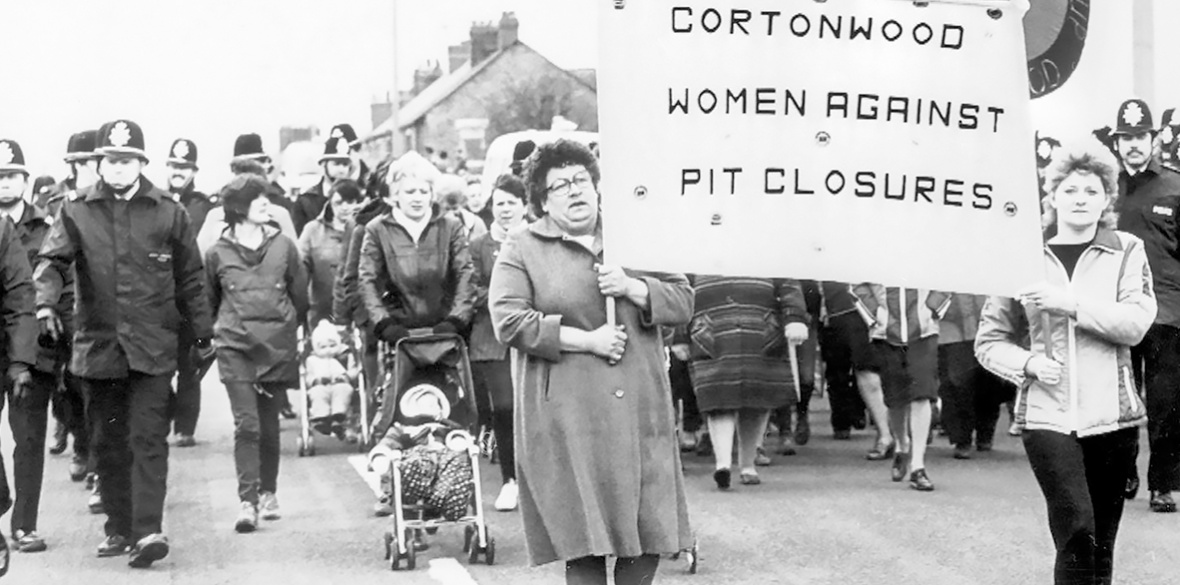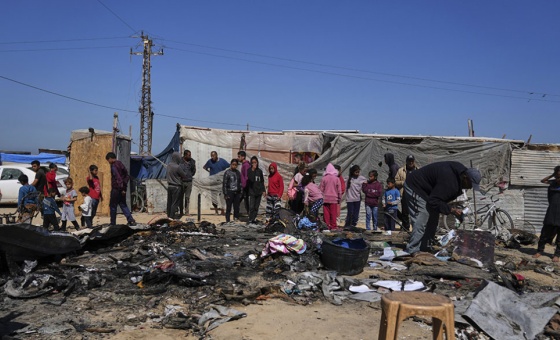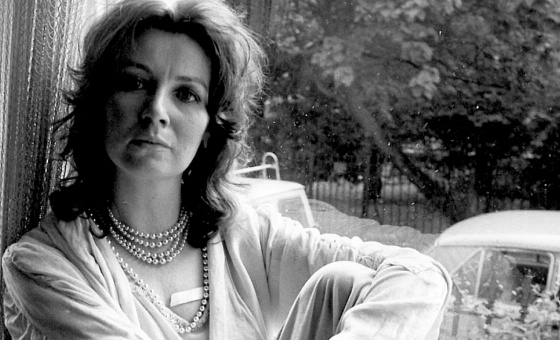This is the last article you can read this month
You can read more article this month
You can read more articles this month
Sorry your limit is up for this month
Reset on:
Please help support the Morning Star by subscribing here
ONCE the strike began grassroots women’s groups started to grow in the coalfields. They set up communal kitchens and prepared food parcels, persuading food shops to offer discounts for their bulk-buying operations.
Local shops, whether independents or branches of large chains, had an interest in offering such discounts in strike areas because their takings had plummeted once miners had little or no income.
Soon the sheer scale of need, with their children hungry and needing new clothes, forced the women’s groups to expand their activities. They began hunting for donations of second-hand clothes, shoes, children’s pushchairs and babies’ bottles.
Thatcher’s Law had cut benefits for striking workers to zero, but even Thatcher’s Law could not stop babies being born into mining families.
Arthur Scargill, Peter Heathfield and many area officials began to praise the women’s groups, while at the same time many local strike centres were starting to see the value of their work.
The activities of the coalfield women’s support groups were integral to the strike effort.
Sometimes those support groups were created initially by men as well as women. In Mansfield, the centre of the Nottinghamshire coalfield, the support group founders were two women, Ida Hackett and Julie Wilkinson, and two men, Ernie Daglish and Andy Miller.
Both Ida and Ernie were members of the Communist Party. Their aim was to involve men and women from the mining area, but over time the group became more and more a women’s organisation, so Ernie and Andy withdrew to leave space on the committee for women.
Their central group co-ordinated the work of the 30 colliery-based Nottinghamshire women’s support groups, covering every mining community in that coalfield.
They were quickly given office space by the public-service workers’ union NUPE at their office near Nottingham city centre. Telephones, photocopying and other facilities were also made available free of charge, which was a very generous commitment by the union.
The central women’s group seemed to attract extra help from women living in the city, with regular Saturday morning fund-raising stalls held next to St Peter’s Church.
On at least one occasion, when some people were causing trouble at the stall, the women were helped by others on the nearby CND stall.
There were other women in mining families who made essential contributions to the strike: the women who went out to work in jobs outside the industry, bringing in wages to keep their families fed and clothed. Those women became sole family breadwinners for that long year.
For instance Maureen Eaton, married to one of the Nottinghamshire Loyal to the Last strikers at Newstead Colliery, got herself a factory job once Eric’s wage had vanished.
Christina Bell, already a home support worker for the County Council, became sole family breadwinner when her husband George was on strike for the full year at Shireoaks Colliery in Bassetlaw.
Many more women were in this position. Their heroic contribution to the endurance test of the strike was just as valuable as that of women in the Women’s Support Groups, although it has usually passed unnoticed by outsiders or historians.
Quite often men and women worked together to bulk-buy and transport food for the kitchens or to give out food parcels. Such joint work often led to a new acceptance of women as equal partners in the strike.
For instance, in autumn 1984 a weekend conference of activists was organised in Durham, with men and women from both Durham and South Wales participating.
Kim Howells of South Wales told the meeting that food parcel distribution in his patch involved men as well as women. They were using those activities as opportunities to discuss the reasons for the strike and the need to keep it going, as not every striking member was actively involved and well informed.
Kim pointed out that it was the women in South Wales who were leading that use of discussion alongside food distribution. Such an acceptance of women as valued partners in the strike was regrettably not universal.
A Yorkshire strike committee meeting clearly disapproved of women picketing, as they decided that women arrested on the picket line would only receive legal support from NUM solicitors if they had been authorised to picket by the union.
The implication was that women who were not even NUM members should ask permission from the NUM before they mounted or joined a picket line. That decision caused such anger that it was later overturned.
Some of the women in grassroots coalfield support groups had previously been involved in politics or campaigns. In Chesterfield the Women’s Action Group grew out of the Women’s Canvass Team that helped Tony Benn’s election as MP for Chesterfield early in 1984.
Part four of our four-part serialisation will be in next weekend’s paper.
Recollections of the Miners’ Strike by Hilary Cave, a joint Morning Star, Manifesto Press book is available now from our shop at bit.ly/ strikeHC.







